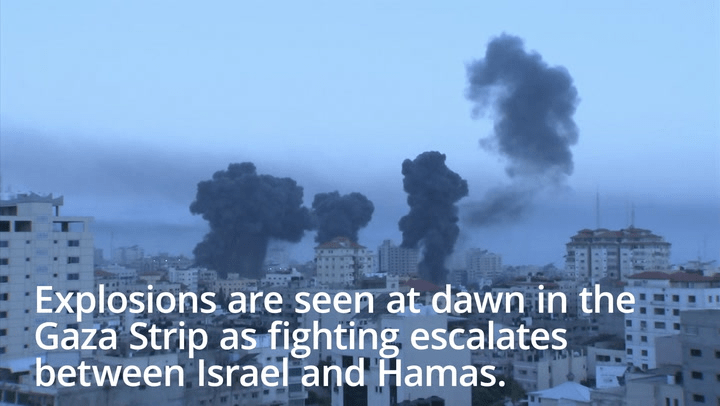
Holodomor genocide Remembrance Day 2018 Holyrood Humza Yousaf self declared champion of the fight against racism did not speak to the subject
The parliamentary debate was important—in highlighting a tragic event letting the world know the cruelty and viciousness of Stalin and his regime.
Europe’s recent history over the past 100 years or so is littered with war, conflict and death.
The first world war resulted in about 16 million deaths.
During the second world war, some 60 million people were killed worldwide.
However, those conflicts are well known. The Holodomor is almost unknown outside Ukraine, and it is time for that to change.
The Holodomor is based on two Ukrainian words: holod, meaning hunger, starvation or famine; and moryty, meaning to induce suffering to kill.
From 1932 to 1933, the Holodomor famine took the lives of between 7 million and 10 million innocent people, many of them children.
After the first world war and the fall of the Bolshevik regime, there was a downfall in the Russian empire, which resulted in the abolition of censorship and the establishment of an independent Ukrainian state, and allowed an astonishing renaissance of literary and cultural activity.
Many new writers and poets expressed their views on politics, and soon the people of Ukraine were working towards the elimination of illiteracy.
They were becoming a smart nation, which did not sit well with Joseph Stalin.
In the summer of 1932, Stalin saw the resurgence of the Ukrainian people as a threat. In a letter to one of his main associates, he wrote:
“If we do not start rectifying the situation in Ukraine now, we may lose Ukraine”.
There is a clear record of Stalin’s Government’s deliberate aims to inflict suffering on the people of Ukraine.
He systematically planned their starvation and death to hold on to their land.
That began in summer of 1932, when Stalin wrote a law that is now commonly known as the law of five ears of grain.
Ukraine was the most important agricultural part of the Union of Soviet Socialist Republics.
Despite making up only 2 per cent of the USSR’s total area, it harvested 23 million tonnes of grain, which was 28 per cent of the gross grain harvest of the whole USSR.
It was the bread basket for Stalin’s regime, and he used that to his advantage and subjected the nation to grain quotas, confiscating supplies down to the very last seed.
All farm land became the property of the Soviet Union.
Food in farmers’ homes was taken, and if they were caught taking food from the land that they had owned, they would face fines, imprisonment and even execution.
As they starved, it became harder to harvest what the Government requested and the punishments worsened.
From the implementation of the first grain quota, they became Soviet prisoners and slaves.
That suffering and starvation of the Ukrainian people was controlled through enforced isolation put in place to prevent starving peasants from going in search of food.
A resolution passed by Stalin and the Soviet regime in January 1933 stated:
“A massive exodus of peasants ‘in search of bread’ has started … without a doubt organised by the enemies of the Soviet Government. [Therefore, regional executive party bodies in Soviet Ukraine are ordered] … to prevent a massive exodus of peasants … [peasants from Soviet Ukraine who have crossed the borders to the north] shall be arrested… and deported back to their places of residence.”
It is recorded that the Soviet regime forcibly sent more than 186,000 people back to their homes to face certain starvation.
We know that the regime systematically sent people back to their villages knowing that there was no food and that those people would die a horrible lingering death.
As a result of the Holodomor, 20 to 25 per cent of the population of Ukraine were exterminated.
That enforced starvation reached its peak in the winter of 1932 and the spring of 1933, when 25,000 people died every day. Maria Kachur, a survivor of the Holodomor, said:
“My mother buried the children herself. When my brother was dying in February 1933, he pleaded for food; my other brother died in March and my sister died in May 1933.”
That harrowing account shows what many families had to endure: the horror of parents burying their own children.
The Holodomor had an extremely high mortality rate for children.
In September 1933, approximately two thirds of Ukrainian pupils were missing from schools.
Many desperate parents would risk being caught by the Soviet secret police and would take their children through the Ukrainian borders, abandoning them in urban areas in the hope that they would find more food there.
However, many died on the streets.
One of the difficulties with the Holodomor is that the death toll has never been known for sure, with many families having buried their own and there being mass graves in many villages.
The head of the secret police of Ukraine wrote a letter in June 1933, stating that
“the mortality rate has been so high that numerous village councils have stopped recording deaths”.
After all those deaths, Stalin used the depleted and barren land to resettle thousands of families from Russia.
By the end of 1933, more than 117,000 people were resettled in the Ukraine.
Alain Besanc¸on, a well-known French historian, stated:
“It was the well-organized executions that made the terror by starvation in Ukraine a genocide.”
That sums up that the orchestrated and systematic killing of the Ukrainian people by the Stalin-led Soviet regime was genocide, and we must recognise those whose lives were destroyed by the Holodomor.
As with other massacres down through the years, we must not forget; we must remember them.

Leave a comment